“Forward Dallas” Goes Backwards on Environmental Justice

In many ways the inaugural Forward Dallas “neighborhood summit” on Saturday was a microcosm of the current state of affairs at Dallas City Hall when it comes to Environmental Justice.
For the first three-quarters of the City’s presentation, staff used all the right language in explaining the goals of the once-a-decade, re-imagine-your-neighborhood, citywide land use planning exercise to the approximately 120 registered participants. Primary among them of course was “Equity” – City Hall’s reflexive one-word description of anything it does now days.

But there was also acknowledgement by Interim Director of Planning Julia Ryan that “previous racial inequities” had been ignored and needed to be redressed. Might there be some newfound ambition in this map redrawing to take on the baked-in racist zoning that’s made Southern Dallas the city’s dumping ground?
As it turns out, no. Dallas City Hall still thinks those “previous racial inequities” can be redressed by planting more trees. Honest.
During the last 30 minutes of the “summit,” participants were disbursed to three Zoom “breakout rooms,” one of which promised to focus on the environmental impacts of land use planning.
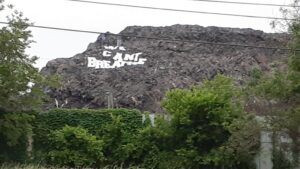
According to the City of Dallas Plan Department, this was all in your imagination.
If you’ve lived in Dallas the last four years, the Dallas where a six-story illegal “mountain” of shingles has become a national environmental justice symbol, the Dallas where Joppa and other Southern Dallas neighborhoods are constantly fighting off new batch plants, the Dallas that hosts an ancient polluter in West Dallas that appears to be openly flaunting the law. If you lived in this Dallas you might have expected this breakout presentation to include a section, if not base the entire session around, the idea of how to get rid of these kind of “previous racial inequities” that put people dangerously close to industrial polluters.
But City Hall lives in a different Dallas. At least according to this breakout session. One where the most pressing Environmental Justice issues revolve around better water management and planting more trees. According to staff, “heat islands” is THE EJ priority for Southern Dallas.
There was not a single mention of Shingle Mountain, Joppa, or West Dallas. In fact, there was no mention of Dallas’ industrial pollution problems at all. Not a one.
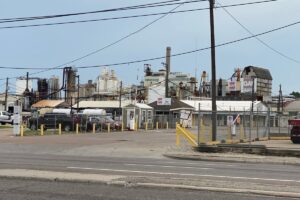 We can’t remember one recent public protest aimed at eliminating heat islands south of the Trinity River. There’s no shortage of trees in Joppa and Floral Farms. Indeed, it’s the City of Dallas lax code enforcement and on-going encouragement of industrial polluters that put the magnificent woods in those neighborhoods at risk.
We can’t remember one recent public protest aimed at eliminating heat islands south of the Trinity River. There’s no shortage of trees in Joppa and Floral Farms. Indeed, it’s the City of Dallas lax code enforcement and on-going encouragement of industrial polluters that put the magnificent woods in those neighborhoods at risk.
On the other hand, since 2018 there have been countless protests, posts, and articles about the problems caused by the City’s continuing embrace of racist zoning, meant to corral “undesirable” people and dirty industries along the Trinity floodplain. Saturday’s session pretended those never happened.
Why? Because City Hall keeps intentionally substituting “Sustainability” for “Environmental Justice.” The two terms aren’t synonymous, though staff uses them as if they were. Sustainability is a catch-all term usually paired, as it was on Saturday, with traditional conservation concerns like water management and urban forestry. A lot of mainstream green groups use it to update those concerns in light of the Climate Crisis. Nothing wrong with that. But it isn’t on point when it comes to the urgency of vastly unequal pollution exposure burdens currently suffered by Black and Brown residents.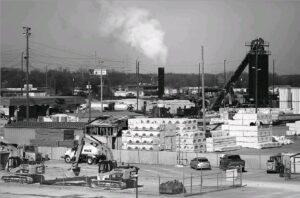
Environmental Justice is inherently about those unequal pollution burdens, they’re not tangential to any other goals. And driving those unequal pollution burdens in Dallas is racist zoning that puts the most polluting industries in predominately Black and Brown neighborhoods. To host a session on the environmental impacts of land use planning and not mention this fact even once is like holding a symposium on the Afghanistan War and never mentioning 9/11.
When this absence was noted in the Question and Answer part of the breakout session, staff were quick to assert how “really important” and “extremely important” the topic of “buffer zones and those kinds of thing” were to them and the process.
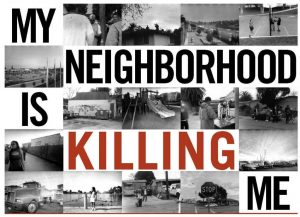 So important they never talked about it until they were forced to. This is a very bad sign.
So important they never talked about it until they were forced to. This is a very bad sign.
Staff didn’t even have the courage to quote the specific charge given to the Forward Dallas process by the much ballyhooed Climate Plan. There it is, listed as goal #4 under Air Quality:
The City will review and potentially amend its zoning standards to separate residential and industrial uses. In addition, it may also consider buffer zones between industrial uses and residential or recreational areas to protect residents from harmful emissions and hazardous industrial activities. The City should evaluate the appropriate buffer distances for air quality and industry types.
Every other air quality goal from the CECAP, including ones with a lot less overlap with land use, were reviewed. This one, directly on point, was ignored.
The most generous interpretation is that the Planning staff may want to sincerely try to resolve EJ issues but feel they lack the expertise, and default to relying on OEQS (Office of Environmental Quality and Sustainability) (¯\_(ツ)_/¯). This is an even worse sign.
Despite neighborhood opposition, OEQS has given its OK to every batch plant recently proposed for Southern Dallas, paid more attention to water run-off issues than human health effects at Shingle Mountain, and refused air monitoring requests from Joppa residents. OEQS has no one on staff with public health expertise or experience. It has been part of the problem Forward Dallas is supposed to be solving.
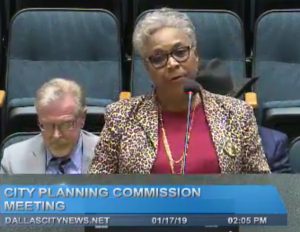
Marsha Jackson fighting off batch plants recommended by the OEQS.
When this was pointed out in the Q&A, OEQS staffer Suzanne Alvarez defended her own and her peers’ experience with “environmental remediation.” Remediation is the term regulators use for cleaning-up environmental problems after the fact, and is usually applied to soil and water contamination. It has nothing to do with measuring or anticipating human health harms from land use based on a public health perspective.
Alvarez’ own degree is in Civil Engineering and includes no public or environmental education at all. She’s not alone. OEQS is heavy on engineers and absent of any public health expertise. So the Department’s answer to every problem is also engineering heavy and absent any public health insight except to say whether a specific monitor is meeting federal standards or not. You’ll never get a comprehensive or honest Environmental Justice evaluation or prescription from such a group. The failure is baked-in.
This is why it’s a fatal mistake to let OEQS take the lead on this subject within Forward Dallas. If you want to change the Status Quo, you have to have someone other than the folks in charge of the Status Quo to do it.
One of the best examples of a public health perspective being integrated into local government policy in Texas is in Houston.
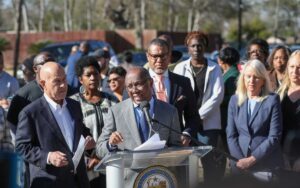
Dr. Loren Hopkins (fourth from right) is a City of Houston employee dedicated to environmental health.
Dr. Loren Hopkins is the Chief Environmental Science Officer for the Houston Health Department. Dr. Hopkins has served on the U.S. EPA Science Advisory Board and Risk and Technology Review Methods Panel and been a visiting scientist on the Centers for Disease Control and Prevention (CDC) Air Pollution and Respiratory Health Branch, Division of Environmental Hazards and Health Effects, National Center for Environmental Health in Atlanta, Georgia. Since 1998, she’s conducted research on the human health effects of Houston’s air pollution.
Rather than a purely reactive mode, Dr. Hopkins has been a proactive environmental health and justice advocate. Here’s an excerpt from a Houston Chronicle article about a neighborhood batch plant fight:
“Echoing the community’s health concerns about the fine particulate pollution emitted by concrete batch plants, the City of Houston’s Chief Environmental Science Officer, Dr. Loren Hopkins, shared data showing that the Acres Homes community already suffers six times the rate of ambulance-treated asthma attacks and twice the rate of cardiac arrests compared to the rest of Houston. Those health impacts are directly associated with exposure to fine particulate pollution, which is compounded by the multiple concrete batch plants already existing in Acres Homes.”
Can you imagine any staffer from the OEQS saying the same thing about a batch plant in Southern Dallas? Houston has public health advocates who oppose new polluters in communities of Color. Dallas has engineers who approve them.
If Planning staff really want to use the Forward Dallas process to tackle the systematic environmental justice issues driving so much grassroots discontent in the city, it needs to rely more on public health professionals like Dr. Hopkins and less on the engineers at OEQS.
